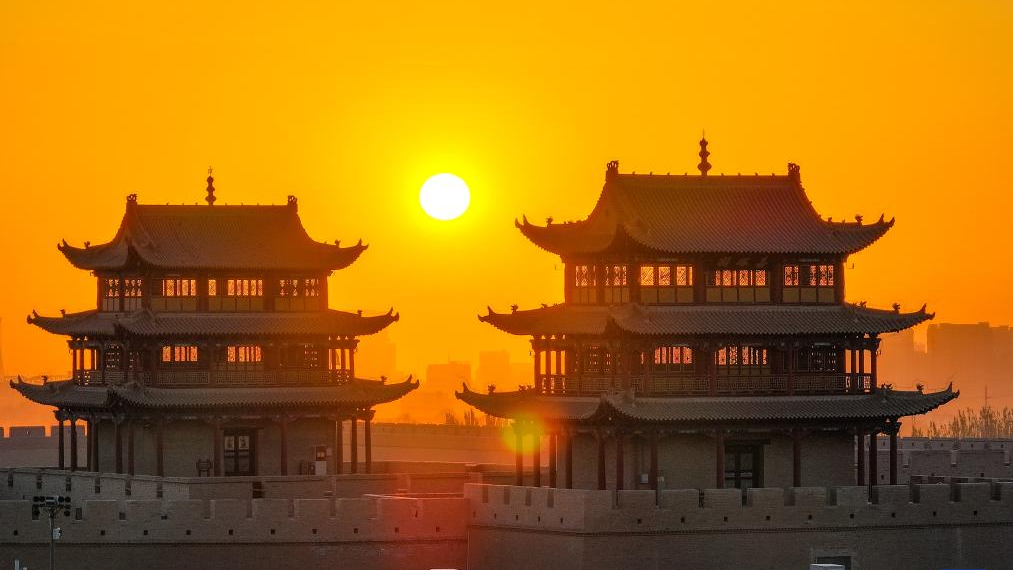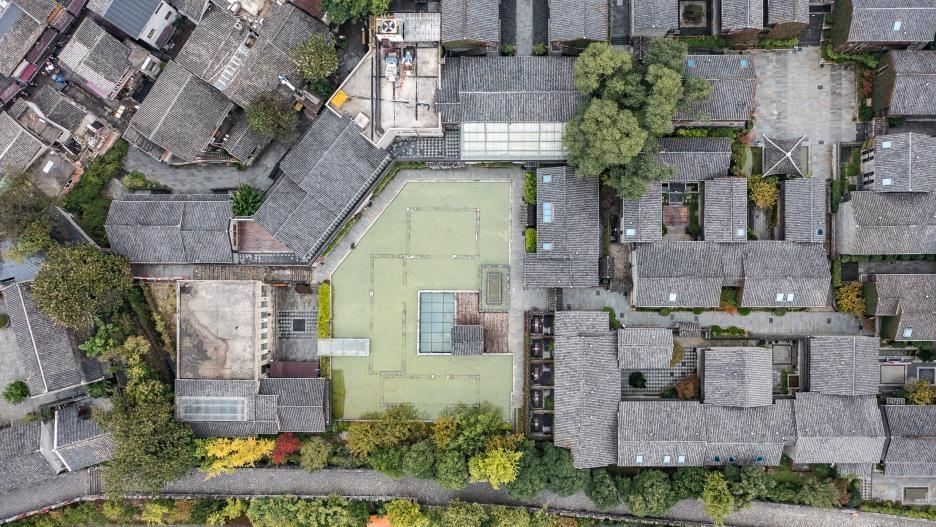Towering rice in southwest China unlocks agricultural potentials
CHONGQING, Oct. 21 (Xinhua) -- Autumn is in full swing across China, and with it comes the bustling season of harvest. Wang Disheng, standing at some 170 centimeters tall, steps into a rice paddy only to find himself nearly "drowned" by the towering rice stalks.
"These rice plants are essentially twice as tall as the regular ones, earning them the nickname 'giant rice.' Some of these giants can even surpass 220 centimeters in height," said Wang, deputy head of Shiwan Township in Dazu District, southwest China's Chongqing Municipality.
Shiwan began cultivating this giant rice in 2021, following the establishment of a research center by the China National Hybrid Rice R&D Center in the area. The Chongqing branch has gathered a multitude of experts focusing on space mutation breeding, hybrid rice breeding and new variety testing, among other research areas.
"We are currently experimenting with over five new hybrid rice varieties, including those with low heavy metal accumulation, saline-alkali tolerance, and selenium-rich rice," said Luo Zhiqiang, office director of the Chongqing branch.
China, recognized as the primary cradle of rice worldwide, saw a monumental achievement in 1973 when the late scientist Yuan Longping, affectionately known as the "father of hybrid rice," and his team successfully developed the world's first high-yielding hybrid rice strain, alleviating hunger for human beings.
"Our work continues to unlock the potential of hybrid rice, enabling it to thrive in diverse environments, as part of our efforts to benefit an even broader range of people," Luo said, noting that the hybrid rice technologies have been introduced to many countries in need.
According to Luo, Sri Lanka, one of the Belt and Road partner countries in South Asia, is seeking cooperation with the Chongqing branch.
"Due to local soil conditions, Sri Lanka is in dire need of saline-tolerant rice, which aligns perfectly with our research focus," Luo said, adding that experts from both sides frequently meet to discuss further collaboration. They plan to introduce new hybrid rice varieties and innovative technologies to Sri Lanka, and conduct technician training, aiming to increase rice production and farmers' income.
Statistics released by the China International Development Cooperation Agency earlier this month show that hybrid rice has been introduced to nearly 70 countries across five continents, significantly boosting rice yields in many African countries from an average of 2 tonnes to 7.5 tonnes per hectare.
In Shiwan, after the recent rice harvest, crayfish are bred in the paddies. The crayfish consume pests and their waste serves as a natural fertilizer for the rice.
"This is one of the reasons we are experimenting with giant rice. The deep waters of the giant rice paddies provide an ideal habitat for crayfish," Wang said.
"Previously, we could only earn about 2,000 yuan (about 281 U.S. dollars) per mu (about 667 square meters) of rice land. Now, with the rice and crayfish rotation model, we can earn 6,000 to 10,000 yuan per mu," Liu Bo, a local farmer, said.
The giant rice and the variety of other rice types have also attracted many visitors. In response, Shiwan has transformed some of its paddies into picturesque scenic spots. Annually, the township now welcomes tens of thousands of visitors and around 30,000 students on educational tours, according to local authorities.
China continues to prioritize food security, as it feeds over 1.4 billion people with just 9 percent of the world's arable land. An array of measures have been implemented across the country to improve grain output over recent years, including the construction of more high-standard farmland and the promotion of agricultural technologies.
Photos
Related Stories
- Feature: How Chinese agricultural expertise is improving farming in Sao Tome and Principe
- Chinese vice premier urges efforts to ensure full-year bumper harvest
- Nearly 70 pct of autumn grains harvested in China
- China's grain barn reaps bumper harvest of soybean
- China promotes building int'l agricultural sci-tech exchange platform in Hainan
Copyright © 2024 People's Daily Online. All Rights Reserved.









